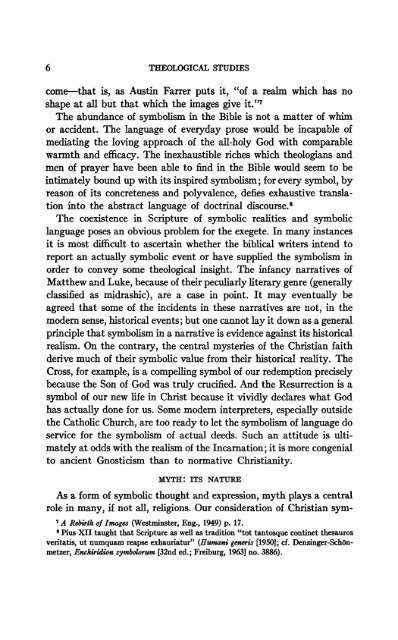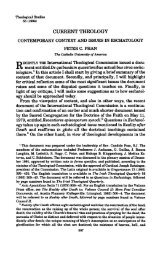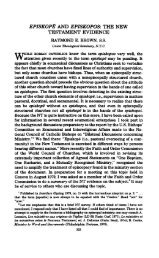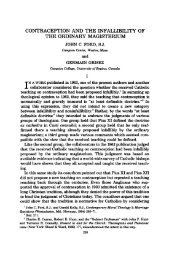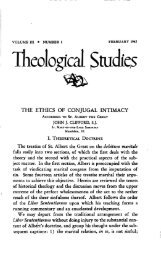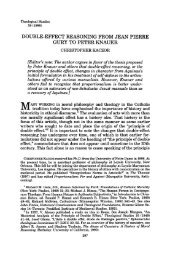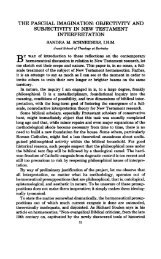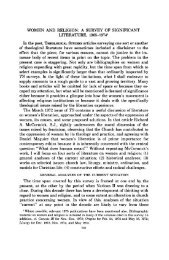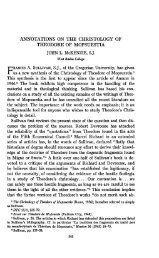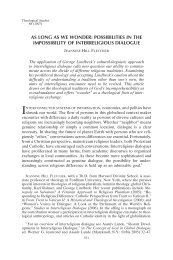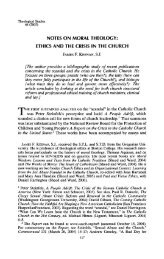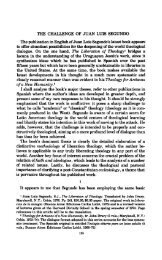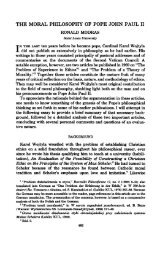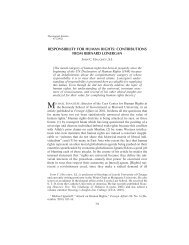SYMBOL, MYTH, AND THE BIBLICAL REVELATION AVERY ...
SYMBOL, MYTH, AND THE BIBLICAL REVELATION AVERY ...
SYMBOL, MYTH, AND THE BIBLICAL REVELATION AVERY ...
Create successful ePaper yourself
Turn your PDF publications into a flip-book with our unique Google optimized e-Paper software.
6 <strong>THE</strong>OLOGICAL STUDIES<br />
come—that is, as Austin Farrer puts it, "of a realm which has no<br />
shape at all but that which the images give it." 7<br />
The abundance of symbolism in the Bible is not a matter of whim<br />
or accident. The language of everyday prose would be incapable of<br />
mediating the loving approach of the all-holy God with comparable<br />
warmth and efficacy. The inexhaustible riches which theologians and<br />
men of prayer have been able to find in the Bible would seem to be<br />
intimately bound up with its inspired symbolism; for every symbol, by<br />
reason of its concreteness and polyvalence, defies exhaustive translation<br />
into the abstract language of doctrinal discourse. 8<br />
The coexistence in Scripture of symbolic realities and symbolic<br />
language poses an obvious problem for the exegete. In many instances<br />
it is most difficult to ascertain whether the biblical writers intend to<br />
report an actually symbolic event or have supplied the symbolism in<br />
order to convey some theological insight. The infancy narratives of<br />
Matthew and Luke, because of their peculiarly literary genre (generally<br />
classified as midrashic), are a case in point. It may eventually be<br />
agreed that some of the incidents in these narratives are not, in the<br />
modern sense, historical events; but one cannot lay it down as a general<br />
principle that symbolism in a narrative is evidence against its historical<br />
realism. On the contrary, the central mysteries of the Christian faith<br />
derive much of their symbolic value from their historical reality. The<br />
Cross, for example, is a compelling symbol of our redemption precisely<br />
because the Son of God was truly crucified. And the Resurrection is a<br />
symbol of our new life in Christ because it vividly declares what God<br />
has actually done for us. Some modern interpreters, especially outside<br />
the Catholic Church, are too ready to let the symbolism of language do<br />
service for the symbolism of actual deeds. Such an attitude is ultimately<br />
at odds with the realism of the Incarnation; it is more congenial<br />
to ancient Gnosticism than to normative Christianity.<br />
<strong>MYTH</strong>: ITS NATURE<br />
As a form of symbolic thought and expression, myth plays a central<br />
role in many, if not all, religions. Our consideration of Christian sym-<br />
7 A Rebirth of Images (Westminster, Eng., 1949) p. 17.<br />
8 Pius XII taught that Scripture as well as tradition "tot tantosque continet thesauros<br />
veritatis, ut numquam reapse exhauriatur" (Humani generis [1950]; cf. Denzinger-Schonmetzer,<br />
Enchiridion symbolorum [32nd ed.; Freiburg, 1963] no. 3886).


